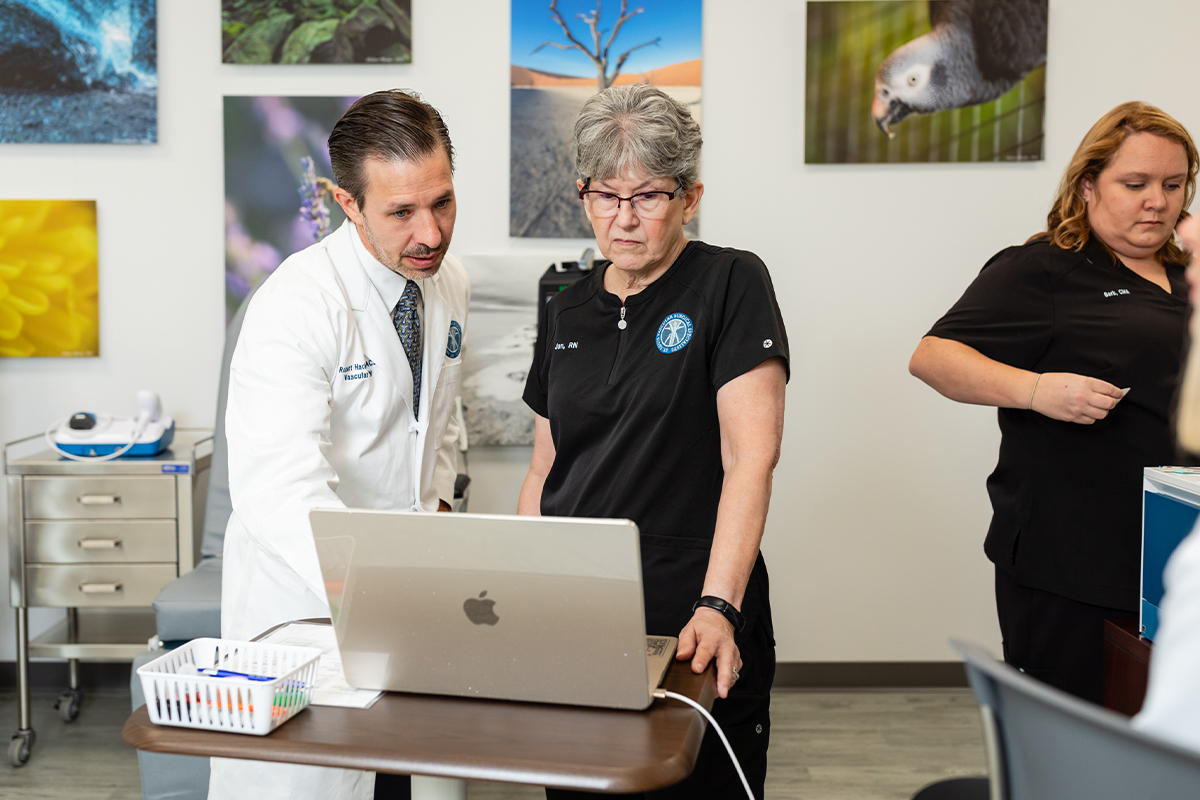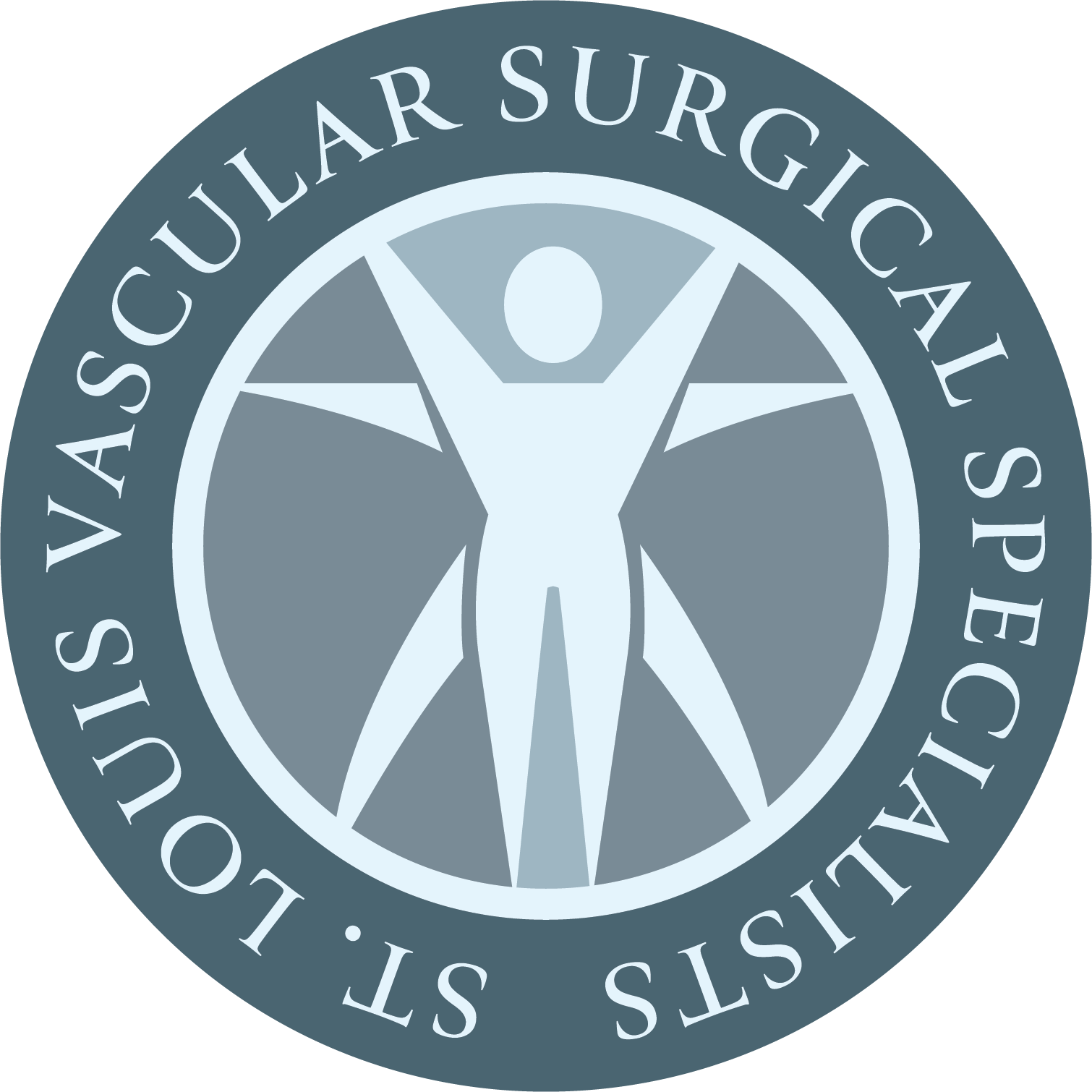Vascular treatments are procedures that manage conditions affecting the blood vessels, arteries, and veins throughout the body. From minimally invasive techniques like angioplasty and stenting to complex surgeries such as bypass grafting, these interventions address issues like peripheral artery disease, aneurysms, and venous insufficiency. Dr. Robert Hacker, the double board-certified general and vascular surgeon at St. Louis Vascular Surgical Specialists, offers personalized vascular treatments in St. Louis to restore proper blood flow and function.
Vascular treatments: an overview
The vascular system, comprising arteries, veins, and capillaries, forms a crucial network responsible for circulating blood and nutrients throughout the body. Arteries carry oxygen-rich blood away from the heart, while veins return oxygen-depleted blood back to it. However, various conditions, ranging from peripheral artery disease and aneurysms to chronic venous insufficiency, can disrupt this system, leading to significant health issues.
Vascular treatments address these conditions and restore proper blood flow. Minimally invasive procedures like angioplasty and stenting are often used to widen narrowed arteries and improve blood flow. Meanwhile, surgical interventions such as bypass grafting may be necessary to reroute blood flow around blocked arteries. By restoring blood circulation, vascular treatments restore optimal vascular health and enhance overall well-being.

Vascular treatments can help with:
- Peripheral artery disease (PAD)
- Atherosclerosis
- Coronary artery disease (CAD)
- Carotid artery disease
- Deep vein thrombosis (DVT)
- Varicose veins
- Chronic venous insufficiency
- Aortic aneurysms
- Renal artery disease
- Raynaud’s disease
- Arteriovenous malformations
- Hypertension (high blood pressure)
- Diabetic vascular disease
- Thrombophlebitis
- Lymphedema
- Spider veins
- Peripheral venous disease
- Arterial embolism
- Venous ulcers
- Vascular tumors
- Other vascular conditions and symptoms
Common vascular treatments offered at SVSS
Angioplasty and Stenting
Angioplasty is a minimally invasive procedure used to widen narrowed or blocked arteries. During the procedure, a catheter with a deflated balloon at its tip is inserted into the affected artery. Once positioned, the balloon is inflated, compressing the plaque against the arterial walls and restoring blood flow. Often, a stent, a small mesh tube, is then inserted to keep the artery open and prevent re-narrowing. Angioplasty and stenting can relieve symptoms associated with coronary artery disease and peripheral artery disease. This can be a necessary vascular treatment in St. Louis.
Bypass Grafting
Bypass grafting is used to reroute blood flow around blocked or narrowed arteries. A healthy blood vessel, often harvested from elsewhere in the body, such as the leg or chest, is grafted onto the affected artery, creating a new pathway for blood to bypass the blockage. By providing an alternate route for blood flow, bypass grafting restores proper circulation to the tissues supplied by the blocked artery, reducing the risk of heart attacks or limb ischemia.
Endovascular Aneurysm Repair (EVAR)
Endovascular aneurysm repair (EVAR) is a minimally invasive procedure used to treat abdominal aortic aneurysms (AAA), which are weakened and bulging areas in the abdominal aorta. During EVAR, a catheter is inserted into an artery in the groin and guided to the site of the aneurysm. Through the catheter, a stent graft, a fabric-covered metal mesh tube, is placed within the aneurysm to reinforce the weakened vessel wall and redirect blood flow away from the aneurysm sac, reducing the risk of rupture.
Sclerotherapy
Another vascular treatment in St. Louis is Sclerotherapy, a minimally invasive procedure used to treat varicose veins and spider veins. During sclerotherapy, a chemical sclerosant solution is injected directly into the affected veins, causing them to collapse and eventually be reabsorbed by the body. This process seals off the dysfunctional veins, redirecting blood flow to healthier vessels. Sclerotherapy is effective in improving the appearance of small varicose and spider veins, reducing discomfort, and preventing complications such as venous ulcers or blood clots.
Thrombectomy
Thrombectomy is used to remove blood clots (thrombi) from arteries or veins, restoring blood flow and preventing tissue damage or organ dysfunction. Depending on the location and size of the clot, thrombectomy may be performed using various techniques, including catheter-directed thrombolysis, mechanical thrombectomy devices, or surgical thrombectomy. Thrombectomy is crucial in managing conditions such as acute limb ischemia, pulmonary embolism, or stroke, where prompt restoration of blood flow is essential to prevent complications.
Carotid Endarterectomy
A carotid endarterectomy removes plaque buildup from the carotid arteries, which supply blood to the brain. During the procedure, an incision is made in the neck over the affected carotid artery, and the plaque is carefully removed from the inner lining of the artery. This reduces the risk of stroke by improving blood flow to the brain and preventing the rupture of unstable plaque. Carotid endarterectomy as a vascular treatment in St. Louis is often recommended for individuals with significant carotid artery stenosis who are at high risk of stroke.
Venous Thrombolysis
Venous thrombolysis is a treatment used to dissolve blood clots (thrombi) in veins, particularly in cases of deep vein thrombosis (DVT) or pulmonary embolism (PE). It involves administering clot-dissolving medications, known as thrombolytics or fibrinolytics, systemically or directly into the clot through a catheter. These medications break down the fibrin strands that hold the clot together, allowing the body’s natural clot-dissolving mechanisms to remove the clot. Venous thrombolysis is often performed with anticoagulant therapy to prevent recurrent thrombosis.
Atherectomy
Atherectomy is a minimally invasive procedure used to remove plaque buildup from arteries affected by atherosclerosis. During atherectomy, a special catheter equipped with a cutting or grinding device is inserted into the narrowed artery, and the plaque is mechanically shaved or ablated, creating a wider lumen for improved blood flow. Depending on the location and composition of the plaque, atherectomy techniques may vary, including rotational atherectomy, directional atherectomy, or laser atherectomy.
Compression Therapy
Compression therapy is a non-invasive treatment used to manage venous insufficiency, lymphedema, and other conditions characterized by poor circulation in the veins or lymphatic system. It involves applying external pressure to the affected limbs using compression garments, bandages, or pneumatic compression devices. By promoting better blood flow and lymphatic drainage, compression therapy can improve venous return, reduce swelling, and prevent complications like venous ulcers and deep vein thrombosis.
Comprehensive diagnoses and treatments at SVSS
At St. Louis Vascular Surgical Specialists (SVSS), we offer personalized care for each patient’s vascular health needs. Led by board-certified vascular surgeon Dr. Robert Hacker, our team is dedicated to providing comprehensive diagnoses and tailored vascular treatments in St. Louis to address a wide range of vascular conditions. During your consultation, Dr. Hacker will meet with you personally to discuss your medical history, symptoms, and concerns.
Dr. Hacker will then conduct any necessary diagnostic tests, such as ultrasound or angiography, to accurately assess your vascular health. Based on these findings, Dr. Hacker will collaborate with you to develop a custom treatment plan that aligns with your goals and preferences. Whether you require minimally invasive procedures like angioplasty or complex surgeries such as bypass grafting, you’ll receive the highest standard of care at SVSS.

Schedule your consultation with Dr. Hacker
St. Louis Vascular Surgical Specialists offers expert vascular care under the leadership of Dr. Robert Hacker. As a double-board-certified general and vascular surgeon with specialized fellowship training, Dr. Hacker brings a wealth of knowledge and expertise to every vascular condition. Our team is committed to personalized care and ensures that each individual receives thorough attention and tailored treatment plans. Schedule your consultation with Dr. Hacker today to explore your personalized options for vascular treatment in St. Louis.
Schedule a
Consultation
At St. Louis Vascular Surgical Specialists, we are committed to providing accessible, high-quality care. We accept most major insurance plans to help meet your healthcare needs. For questions about coverage or to verify your insurance, please contact our office today.
